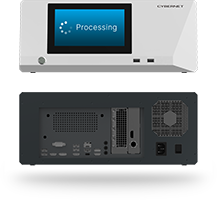Once upon a time, patients had to physically travel to doctors’ offices and hospitals to seek medical treatment. Telemedicine now allows many such treatments to be performed without the patient ever leaving their home, like virtual consultation.
Now, learn how advances in AI-enabled computers are expanding the scope and depth of telemedicine in today’s patient care.
- What Is AI in Telemedicine?
- How AI Is Used in Telemedicine and Remote Healthcare
- The Key Benefits of AI in Telemedicine
- Challenges of AI in Telemedicine and How to Overcome Them
- Future Trends: The Next Phase of AI in Telehealth
What Is AI in Telemedicine?
Artificial intelligence in telemedicine brings AI technologies, like machine learning, to the telemedicine platform: video conferencing, remote patient monitoring, etc. Such digital transformation bridges the distance between provider and patient to deliver convenient, personalized, and effective healthcare.
How AI Is Used in Telemedicine and Remote Healthcare
Telemedicine technologies range from real-time virtual consultations between providers and patients to medical staff monitoring patient vitals from hundreds of miles away. AI running on computers like a medical AI box PC enhances telemedicine applications in various ways.
How AI Analyzes Patient Vitals for Early Warning Signs
Remote patient monitoring (RPM) allows providers and medical staff to keep an eye on patient vitals like temperature and blood pressure from a distance. AI further bolsters RPM, adding features like continuous real-time data analysis, personalized alerts, and predictive analytics of upcoming health issues.
AI and Medical Imaging: Detecting Health Issues in Seconds
Devices ranging from camera-equipped medical computer tablets to onsite portable X-ray machines allow providers to remotely examine patient issues like skin issues, stitching, and wounds. AI applications can analyze such medical images and provide information ranging from the type of problem (rash, bed sores, skin cancer, etc.) to how best to treat chronic wounds.
Voice-Activated AI Assistants for Medication and Appointment Reminders
Virtual assistants help patients to schedule appointments, set up reminders, and answer basic health queries. AI-enhanced assistants can do all these and more, which is made much easier thanks to the AI's ability to understand natural language. Example: Instead of scrolling endless menus to schedule an alert on their smartphone, the patient can simply say, "Can you let me know when my doctor starts his rounding tomorrow?"
The Key Benefits of AI in Telemedicine
The coupling of artificial intelligence with telemedicine brings several positive effects to providers and patients alike.
- Provide quality health care to underserved populations and areas through teleconference technology and telehealth kiosks.
- Reduction of constant patient monitoring, allowing medical staff to focus on more immediate patient care.
- Handle routine tasks and queries 24/7, which reduces the need for additional staffing and equipment, which also lowers costs.
- Greater diagnostic efficiency and precision through AI's ability to offer suggestions, diagnostic clues, and follow-up questions based on patient responses.
- More efficient and personalized patient care thanks to the data-driven insights from AI-enhanced telemedicine technology.
Challenges of AI in Telemedicine and How to Overcome Them
While modern telemedicine can be traced as far back as the 1900s, artificial intelligence is a more recent innovation. Thus, medical groups need to know the challenges of merging the two technologies. For example, AI models need large amounts of data to perform properly. Datasets not correctly vetted by medical staff could lead to biased results or hallucinations: incorrect results the AI states as fact.
Another hurdle is gathering all sources of information and integrating them into AI models. Many hospitals, clinics, and medical facilities don't use centralized systems to store patient records, providers' notes, hospital inventory, etc. Such systems must be connected and their data organized for AI algorithms to function accurately.
Finally, patient data is tightly regulated and legally protected through laws like HIPAA. AI computers processing such data should be HIPAA-compliant to offer maximum protection for both the patient and medical group.
Future Trends: The Next Phase of AI in Telehealth
AI-enhanced telemedicine is opening up new applications and usage. Systems to remotely assess if a patient's skin condition is cancerous, for example, can be trained to observe patients with musculoskeletal diseases like arthritis or muscular dystrophy. There, it ensures the patient follows any exercises as prescribed and correctly in the comfort of their home. Similar technologies using a patient's voice to diagnose for disease could be used in telepsychiatry to detect depression and other behavioral health issues.
Cybernet’s AI Solutions for Telemedicine: What You Need to Know
Telemedicine connects providers to their patients from a distance, offering medical services ranging from health monitoring to providing general information 24/7. The healthcare industry is tapping artificial intelligence to bolster these services while offering new ones like predicting analytics. Bias results and data security are just a few challenges with AI-enhanced telemedicine, which continues to innovate with upcoming features like medical diagnosis solely through the patient's voice.
Contact the team at Cybernet Manufacturing if your medical group is looking for AI solutions for its telemedicine and telehealth technology. We're an OEM with deep experience in healthcare IT. Our team of experts will happily discuss how our medical computers meet the industry's unique challenges with features such as IEC 60601 certification and fanless design. We can also customize our products further to meet your specific telemedicine wants and needs.


